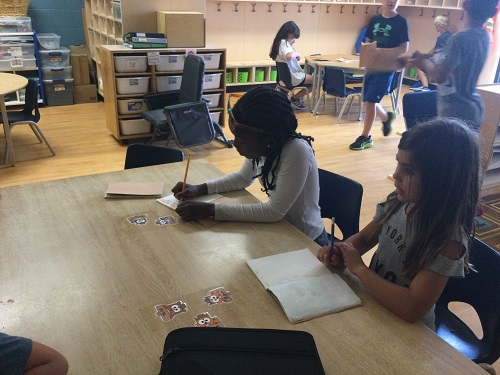In School-age 3, we have been working on our wellbeing. We began the year with journaling and have explored a few more self regulation activities. Christine and Julia noticed the children were drawn to puzzles. Many children showed determination and focus while working independently or in a small group on puzzles. Even some of the more fast paced children were able to sit and focus on a puzzle.
Puzzles have been known to be a great brain exercising activity but what exactly does it do? Tanya Mcllroy shares in her article “13 incredible benefits of puzzles for child development” that puzzles help children develop fine motor skills, visual perception, attention span, problem solving, relaxation, perseverance, cognitive development and many more.
Many children have shown a great interest in building different structures with our magnet tiles and blocks. Children like to share their finished work with peers and often ask to take a picture of their creation. Similarly, children express pride in their finished puzzles. They are learning from their hard work and focus, that they can complete something they can be proud of. Some children like to complete the same puzzle on different days and will see if they find it easier. I wonder if we timed them if they could do the puzzle faster after a few times.
To expand on this self- regulation activity Christine brought in a blank wooden puzzle with enough pieces for everyone to do a few. The children individually coloured their pieces by writing their name or drawing something they enjoy or even just a doodle. A few children thought ahead and asked for pieces that fit together so they would have one larger canvas for their contribution. Now that almost all the pieces are decorated we can construct the puzzle and see what our masterpieces look like when we put them all together.
Julia brought in some paper 3D puzzles for the children to try. By folding, gluing and following the instructions the children can complete a 3D animal. This was quite a challenging project for the children so a few have taken them home to complete. The children have the motivation to complete these puzzles because they know how proud they will feel when they have accomplished something that may have felt impossible. This can help set them up for future success by teaching self discipline and motivation.
A puzzling duo decided to work together on one of our classroom puzzles with 100 pieces. Together the pair conversed about their days and the placement of pieces. They felt no need to rush and they casually bonded while completing the puzzle. One of the friends said “This is actually kinda relaxing” and their peer agreed with a nod. This showed evidence of puzzling having a benefit of building relationships and having a destress/ wellness effect on the children.
As a class we are continuing to explore more types of puzzles and other wellness activities. We hope to move forward in possible fidget toy paper crafts (a combination of a paper puzzle ending as a fidget toy). We can reflect as a class or in conversations as small groups (educator led) to help the children look inward on what activities they find the most calming. Even reflecting on the activities in our journals can allow for the children to look back on how each activity made them feel.













